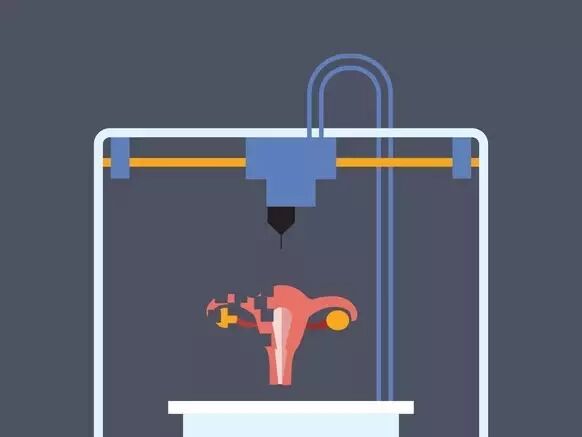
The 3D printed ovaries have milestone significance for biomedical research (Image source: WIRED)
This article is reproduced with permission from the public account “Academic Longitude and Latitude”
The uniqueness of this 3D printed ovary lies in the fact that it not only did not cause adverse effects in the mice but also functioned normally. Multiple mice that received the transplant of this artificial ovary successfully became mothers. This research, which went viral on technology websites, was published on May 16, 2017, in Nature Communications.
Friends who follow technology are certainly familiar with the concept of 3D printing. Since its inception, 3D printing technology has gradually found broader applications in medicine. Previously, doctors at the University of Michigan 3D printed a scaffold to open a baby’s trachea, saving his life. This month, a team from Northwestern University has created a milestone artificial ovary using 3D printing technology, making headlines on numerous technology websites.
For women, the ovary is an indispensable reproductive organ. However, in certain cases, genetic mutations, ovarian diseases, or radiation and chemotherapy can cause irreversible damage to the ovaries, impairing their function. This not only shatters the dreams of many women to become mothers but also disrupts their hormone secretion. Therefore, if advanced medical technology can produce a functional artificial ovary, it would greatly improve the quality of life for these women.
This is precisely what Professor Teresa Woodruff, a renowned scientist at Northwestern University, aims to achieve. The co-senior author of the study pointed out that the ovary is filled with follicles, which are immature eggs surrounded by hormone-secreting cells. The “function of the ovary is to guide these follicles to mature gradually and produce eggs each month.” Therefore, to create an artificial ovary, it is essential to simulate the interdependent structure between the ovary and the follicles.
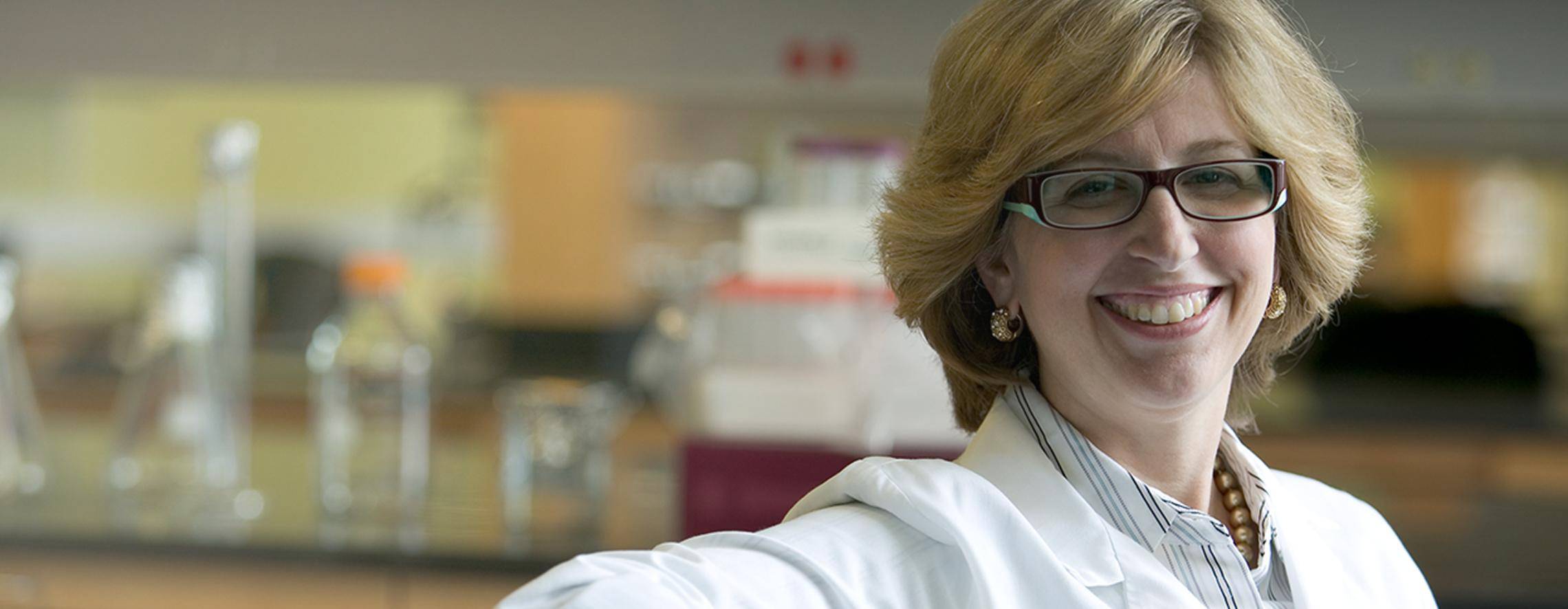
Professor Teresa Woodruff, one of the main researchers of this study. Image source: Northwestern University
Last year, this group of researchers used chemical reagents to remove the follicles, blood vessels, and other tissues from human ovaries, leaving only a complex scaffold made of collagen. Under a microscope, the researchers found that this scaffold structure interwove to form small compartments. “It’s like the human skeleton supporting our flesh and blood,” Professor Woodruff said: “Every organ has an extracellular matrix. They are made of hard materials, just like scaffolding.”
If we can print this scaffold, we might be able to create the basic structure of the ovary.
Let’s talk about the principle of 3D printing. It is similar to a regular printer, generally requiring liquid “ink.” What’s different is that this “ink” gradually solidifies in the air, forming a hard structure. The same applies to printing biological organs—researchers need to find a biocompatible material that can be printed in liquid form and gradually solidify into a solid structure. This is not an easy task.
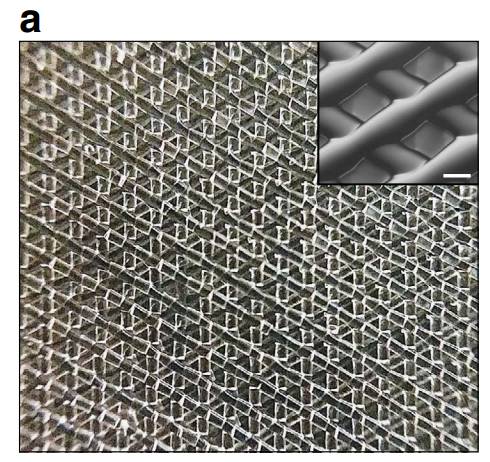
The 3D printed ovarian scaffold is a work of art. Image source: Nature Communications
A talented PhD student solved this problem. She used gelatin, a natural collagen commonly found in many animal ovaries. She then discovered that around 30 degrees Celsius is the optimal temperature for printing. If the temperature is too high, the printed structure will sag under gravity before it solidifies. If the temperature is too low, the gelatin will clump together before reaching the correct position. These findings broke through the challenges of 3D printing artificial ovaries.
Thus, the researchers created a prototype of the artificial ovarian scaffold—within a space of 1.5 cm square, they “woven” various scaffolds to support the ovaries, each with different densities. They then placed mouse follicles within them to observe their growth. The experiments found that follicles grew better in denser structures and could survive in vitro for up to 8 days. This may be because they received better structural support.
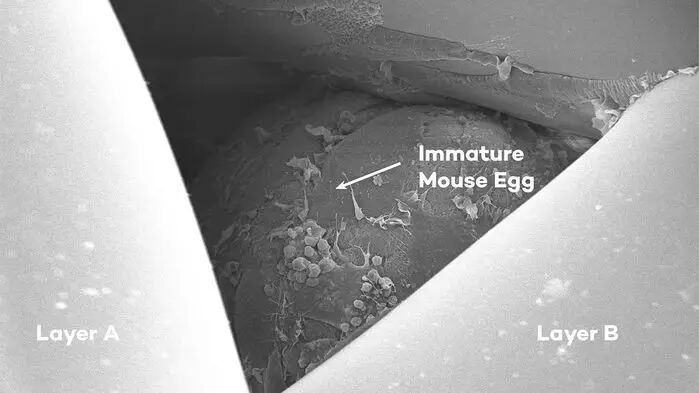
Follicles grew well in the 3D printed scaffold. Image source: Northwestern University
After achieving ideal results in vitro, the researchers turned to in vivo experiments. They left a series of 2 mm sized holes in the 3D printed ovarian scaffold and implanted a follicle in each hole. Thus, an artificially created ovary was formed. They then transplanted these artificial ovaries into seven mice that had their ovaries removed and observed the actual performance of the artificial ovaries in the organism.
In anxious anticipation, the researchers first observed a positive phenomenon—blood vessels gradually penetrated into these 3D printed ovaries in the mice. This is significant for the entire experiment. Blood vessels provide oxygen and nutrients to these follicles and can circulate the hormones they produce throughout the body. These phenomena also suggest that these 3D printed ovaries are likely to perform the functions of natural ovaries.
Sure enough! These mice first exhibited ovulation cycles, and three of them successfully gave birth to offspring after mating. These newborn mice were all normal and even became parents themselves. The researchers observed several generations of mice, and the results were perfect. They also confirmed that the artificial ovaries did not cause any significant side effects in the mice.
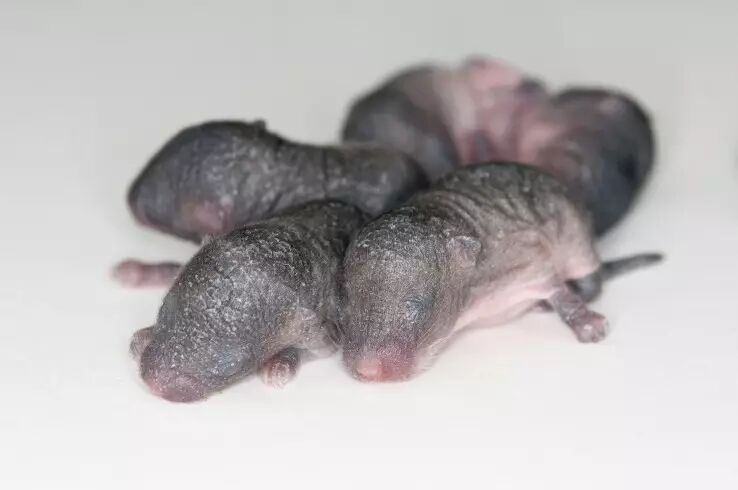
These mice implanted with 3D printed ovaries successfully gave birth to offspring. Image source: techcrunch
In the excitement, Professor Woodruff has already set her sights on the future. She said, the team’s next plan is to create ovaries that can function normally in pigs. Since the size of pig organs is similar to that of human organs and their physiological cycles are also similar, this is expected to promote the eventual application of this technology in humans. More importantly, the gelatin used in this research is FDA-approved material, which will also accelerate its development and approval.
The ovary is a complex organ that is not only connected to the brain through hormones but also regularly affects blood vessels through its physiological cycle. The success of this research has also boosted scientists’ confidence in tackling the 3D printing tasks of other organs. In the future, more organs created through 3D printing may emerge, benefiting patients in need of organ transplants.
References:
[1] A bioprosthetic ovary created using 3D printed microporous scaffolds restores ovarian function in sterilized mice
[2] Scientists 3D-printed ovaries and made mouse babies
[3] 3D-printed ovaries restore fertility in mice
[4] Scientists 3-D Print Mouse Ovaries That Actually Make Babies
Paper Information
Title A bioprosthetic ovary created using 3D printed microporous scaffolds restores ovarian function in sterilized mice
Journal Nature Communications
Date May 16, 2017.
Abstract Emerging additive manufacturing techniques enable investigation of the effects of pore geometry on cell behavior and function. Here, we 3D print microporous hydrogel scaffolds to test how varying pore geometry, accomplished by manipulating the advancing angle between printed layers, affects the survival of ovarian follicles. 30° and 60° scaffolds provide corners that surround follicles on multiple sides while 90° scaffolds have an open porosity that limits follicle–scaffold interaction. As the amount of scaffold interaction increases, follicle spreading is limited and survival increases. Follicle-seeded scaffolds become highly vascularized and ovarian function is fully restored when implanted in surgically sterilized mice. Moreover, pups are born through natural mating and thrive through maternal lactation. These findings present an in vivo functional ovarian implant designed with 3D printing, and indicate that scaffold pore architecture is a critical variable in additively manufactured scaffold design for functional tissue engineering.
Link https://www.nature.com/articles/ncomms15261

Read More
▽ Stories
· Covering the world with these tiles, the patterns will not repeat
· Surprise! American scientists discover key factors for baldness and greying hair
· Next, will AI review your paper?
· AlphaGo defeats Ke Jie, machine wins the first round in the human-machine battle | On-site report
▽ Paper Recommendations
· Long-term and short-term memories actually form simultaneously | Science Paper Recommendation
· The teams of Bai Fan, Xie Xiaoliang, and Zhang Ning reveal the genomic characteristics of circulating tumor cells and the mechanisms of cancer metastasis | Genome Research Paper Recommendation
· Introducing cell surface antibodies to combat AIDS | PNAS Paper Recommendation
▽ Paper Guide
· Nature Weekly Paper Guide | May 18, 2017
· Science Weekly Paper Guide | May 19, 2017
For content collaboration, please contact
